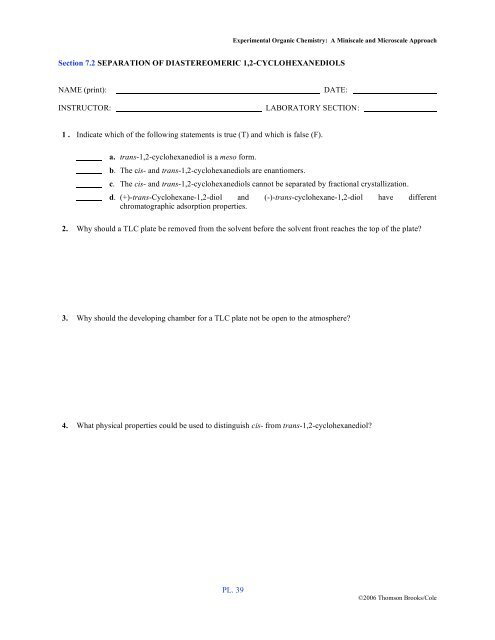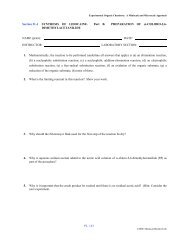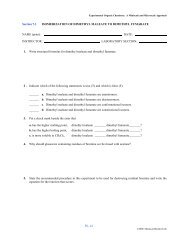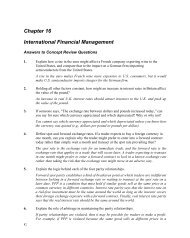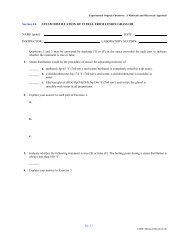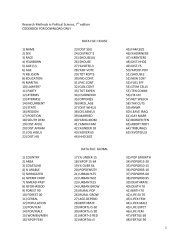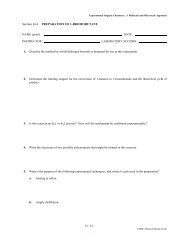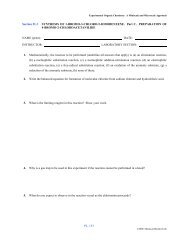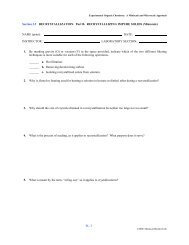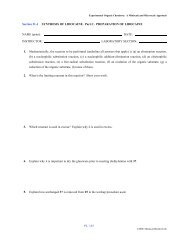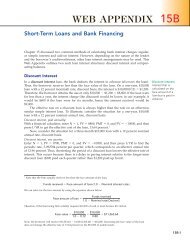separation of diastereomeric 1,2-cyclohexanediols
separation of diastereomeric 1,2-cyclohexanediols
separation of diastereomeric 1,2-cyclohexanediols
You also want an ePaper? Increase the reach of your titles
YUMPU automatically turns print PDFs into web optimized ePapers that Google loves.
Experimental Organic Chemistry: A Miniscale and Microscale Approach<br />
Section 7.2 SEPARATION OF DIASTEREOMERIC 1,2-CYCLOHEXANEDIOLS<br />
NAME (print):<br />
INSTRUCTOR:<br />
DATE:<br />
LABORATORY SECTION:<br />
1 . Indicate which <strong>of</strong> the following statements is true (T) and which is false (F).<br />
a. trans-1,2-cyclohexanediol is a meso form.<br />
b. The cis- and trans-1,2-<strong>cyclohexanediols</strong> are enantiomers.<br />
c. The cis- and trans-1,2-<strong>cyclohexanediols</strong> cannot be separated by fractional crystallization.<br />
d. (+)-trans-Cyclohexane-1,2-diol and (-)-trans-cyclohexane-1,2-diol have different<br />
chromatographic adsorption properties.<br />
2. Why should a TLC plate be removed from the solvent before the solvent front reaches the top <strong>of</strong> the plate?<br />
3. Why should the developing chamber for a TLC plate not be open to the atmosphere?<br />
4. What physical properties could be used to distinguish cis- from trans-1,2-cyclohexanediol?<br />
PL. 39<br />
©2006 Thomson Brooks/Cole
Experimental Organic Chemistry: A Miniscale and Microscale Approach<br />
5. Why might water not be an appropriate extinguishing medium for burning petroleum ether?<br />
6. Identify any <strong>of</strong> the following diagrams that illustrate an improperly spotted TLC plate and explain what is<br />
wrong in each such case.<br />
a.<br />
a. b. c. d.<br />
Liquid level<br />
b.<br />
c.<br />
d.<br />
7. The flash points (°C) for petroleum ether (bp 60–80 °C), acetone, and 2-propanol are, respectively,<br />
, , and .<br />
8. List three <strong>of</strong> the possible effects <strong>of</strong> inhaling excessive amounts <strong>of</strong> acetone.<br />
PL. 40<br />
©2006 Thomson Brooks/Cole


